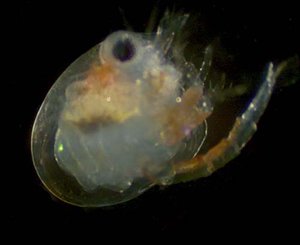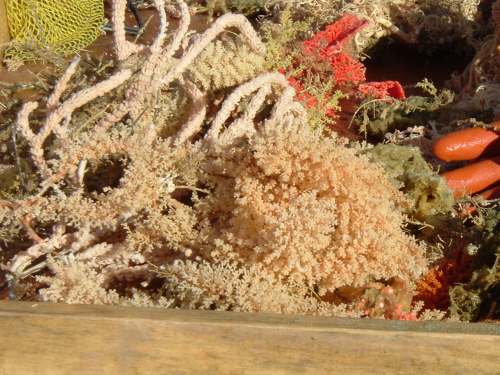| • Home |
| • Questions |
| • Participants |
| • Background Information |
My watch of midnight to 4am today involved, for the first time, sorting critters from a plankton tow. This was a large cone-shaped net with a special catching tube on its pointy end that was dragged behind the ship for about 20 minutes.

| 1 | 2 | 3 | 4 | 5 | 6 | |
| 7 | 8 | 9 | 10 | 11 | 12 | 13 |
| 14 | 15 | 16 | 17 | 18 | 19 | 20 |
| 21 | 22 | 23 | 24 | 25 | 26 | 27 |
| 28 | 29 | 30 |
| 1 | 2 | 3 | 4 | |||
| 5 | 6 | 7 | 8 | 9 | 10 | 11 |
| 12 | 13 | 14 | 15 | 16 | 17 | 18 |
| 19 | 20 | 21 | 22 | 23 | 24 | 25 |
| 26 | 27 | 28 | 29 | 30 | 31 |
Then the net and tube are rinsed down into a bucket. We took a scoop of the sample (using a turkey baster!) and put it in a small round Petri dish to look at under the microscope. Although this one was full of critters called copepods (“cope-uh-pods”) that dart to and fro, our instruction was to look for certain bugs (non-copepods) for identification and counting. Since it was the first time at the microscopes for most of us, the 12-4 team leader, Izzy Williams, was running like a copepod, back and forth to answer questions about what we were seeing, like, “What’s this?” and “Is this something you want to keep?”. We sure kept her busy, but it was a calm night weatherwise, making it easy to look through the microscope lens at moving things, with only minor “sloshing”. One critter that was fun to look for and capture with a tiny pipette siphon, was the zoea. We looked at a sample of it, decided it looked like a football helmet with a tail, and so we called it the “football head” [See Image 1, Zoea]. I’m sure the chief scientist would forgive us for making light of what he might consider very important to the study, but might be happy if we always remember what a zoea looks like. I will probably never forget what a copepod looks like, though, because I think I saw half a million of them!!
Our next operation was to drop the Smith-MacIntyre grab instrument overboard to take about a cubic foot of material off the ocean bottom, look it over, and see if a larger sampling would be worthwhile. The first time down, a rock jammed the “jaws” open a bit, and too much of the sample leaked out. A second drop brought back evidence of a good sampling area, so the Blake Trawl was deployed (see the Auburn website www.auburn.edu/antarctica, for details of the equipment I’m talking about here). The return on that was most rewarding, this time scooping a great number of basket stars and loads of soft coral. [See Image 2 Soft Coral] It will be a productive night of something new and different to process. It just never gets boring out here!!
Because it was a less hectic day, I had the opportunity to use the “gym” area for the first time. It is a good-sized exercise room with a rowing machine, treadmill, reclining bicycle, pole weights and a Universal Gym.

There’s a vcr/cd player in there, too, and I had some exercising companions and good Australian music to keep the rhythm going. For having done this, tomorrow I will likely need to use the Jacuzzi… I’ll tell you about that later.
Dinner Menu (shipboard, 11/27): |
|
Prime rib, |